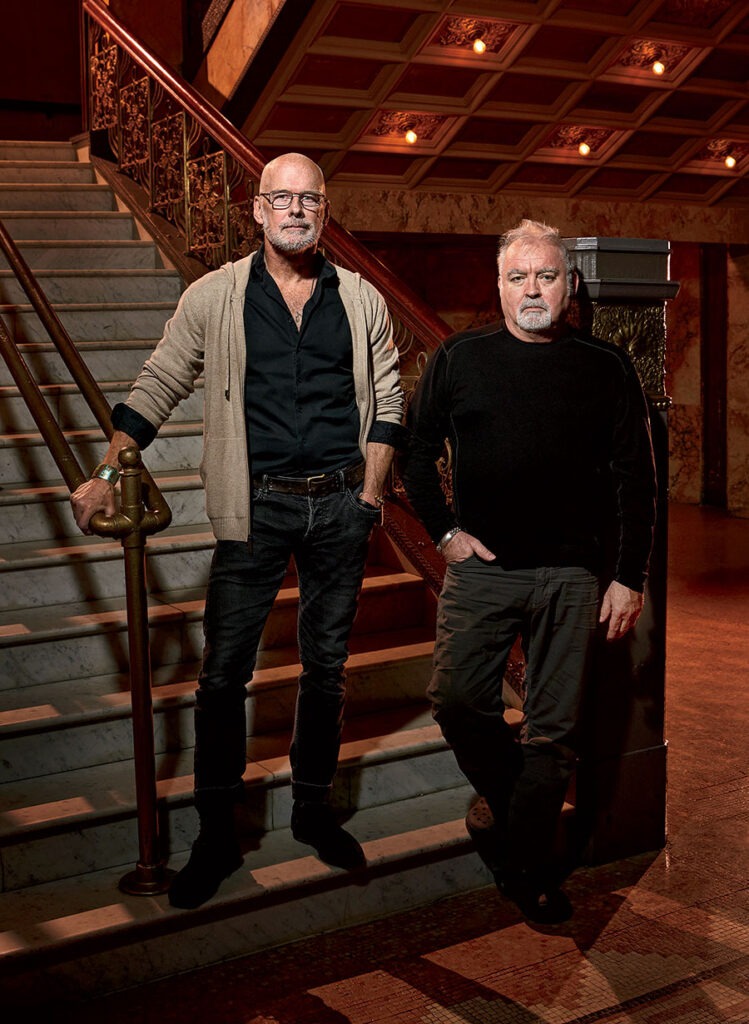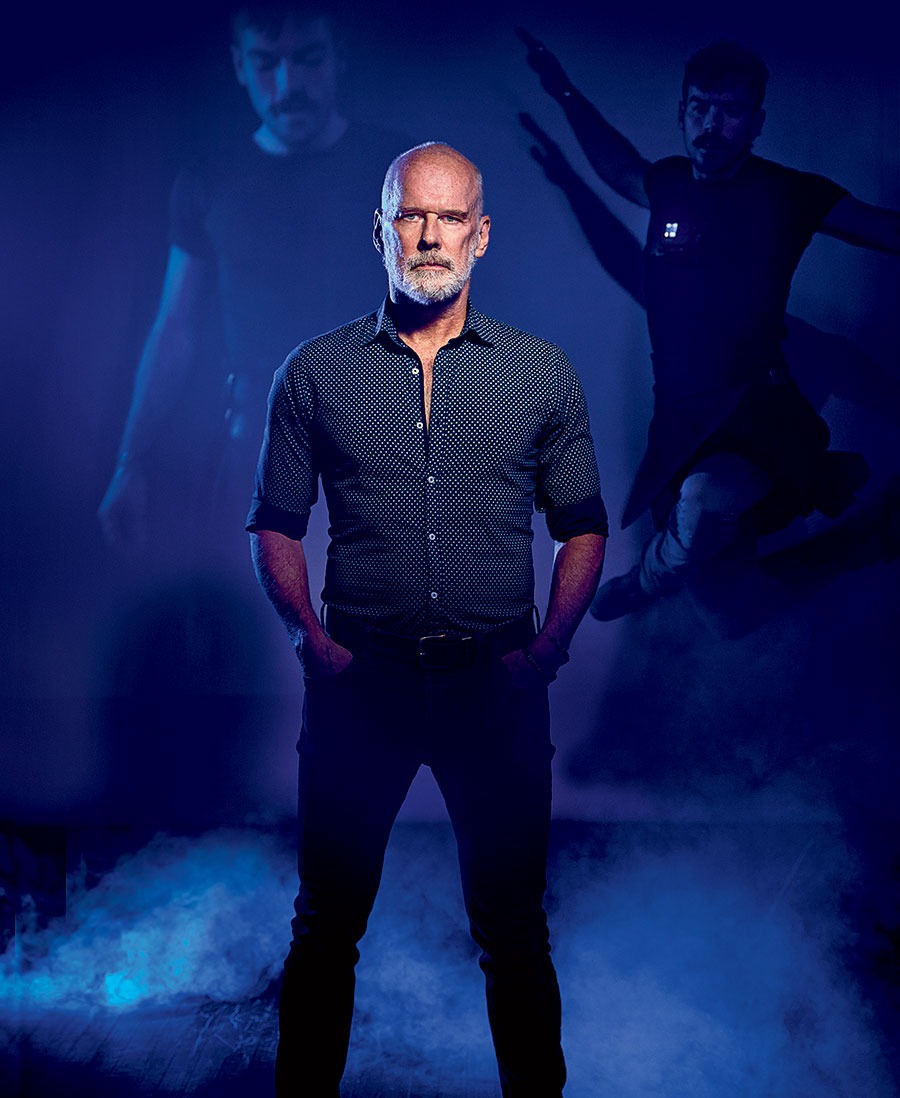About a year ago, Harrison McEldowney was busy at work on a project in the Maldives. There in his role as senior creative director at the Chicago-based consulting company Wilson Dow, he went online for inspiration and stumbled across a video that kindled some dormant artistic embers. It was footage of Burning Man — but the drone filming the event had crashed to the ground, where partygoers had retrieved it and passed around the still-recording robot.
Suddenly, McEldowney, who’d built a celebrated career as a dance choreographer in the 1990s and 2000s before fully transitioning to the corporate world, had an idea. “Everything is through the lens of a camera these days,” he says. “Why not take it one step further?” He immediately texted his friend Mark Howard, founding artistic director of Trinity Irish Dance Company in Chicago. Just like that, McEldowney, 61, was ready to create for the stage again.
The result is P.O.V., which debuts March 3 as part of Trinity’s annual engagement at the Auditorium Theatre. McEldowney’s piece trades the drone for a GoPro camera, which is strapped onto the chest of one of 11 dancers. While they perform, the footage is projected onto a screen above the stage, offering the audience a unique glimpse of what dancers see as they whirl around.
But P.O.V. is more than modern-tech gimmickry. “We didn’t just put a camera on an existing piece,” McEldowney says. Instead, he developed a dance with the video component in mind. His goal was to capture not only the technical precision for which Trinity dancers are known but also their athletic energy and speed. Set to an eclectic score that includes Irish-influenced rock, the piece came together quickly after the first proof-of-concept rehearsal last August.
It marks a return to form for McEldowney, who grew up in Texas and went on to forge a career dancing and choreographing all over the globe. He arrived in Chicago around 1990, soon joining River North Dance and later designing pieces for Hubbard Street Dance and the Ruth Page Civic Ballet. His other work includes projects as big as choreographing a portion of the closing ceremonies of the 1992 Barcelona Olympics.

Both rooted in the Chicago dance world, McEldowney and Howard had become drinking buddies. McEldowney first worked with Howard’s company in 2003, brainstorming a dance called The Irish and How They Got That Way, which parodied Irish history and parables with his signature irreverent humor. (Highlights, as McEldowney recalls, included “nuns doing ‘The Vatican Rag’ and a ballad about a young girl who kills her whole family.”)
But eager for new creative challenges, McEldowney gradually switched careers. With the move to Wilson Dow, he traded stage fare for business productions, including some quite grandiose product launches for the tech industry and ship-naming ceremonies for the cruise industry. The last time he choreographed a concert dance was a full decade ago. “I’m not going to do a piece if I don’t have something,” he says. “I need an idea.”
For his part, Howard always aimed to lure McEldowney back to the stage. He had issued a standing invitation for his friend to return — and all these years later was delighted when McEldowney reached out. “The guy is a genius,” says Howard. “My only job was to get him in the room with the dancers.”
In addition to P.O.V., the Trinity showcase features a second world premiere, this one choreographed by Howard and the company’s associate artistic director, Chelsea Hoy. Deploying a whimsical vaudevillian edge, Taking the Mick explores the immigrant experience of reinvention. The title phrase refers to teasing or ridiculing someone, which Howard experienced as a young Irish lad growing up in Rogers Park. “It has subtle themes of social mobility, one-upmanship, chasing power, struggle, faith, fickleness, and shifting loyalties,” he explains.
Combined, the two new pieces are the latest example of how Trinity pushes the genre forward. “Ours is a unique place in the global Irish dance community,” says Howard, a 2023 Irish American Hall of Fame inductee. “I’m not interested in mimicry. We’re expected to deliver on what’s next for the art form.”



